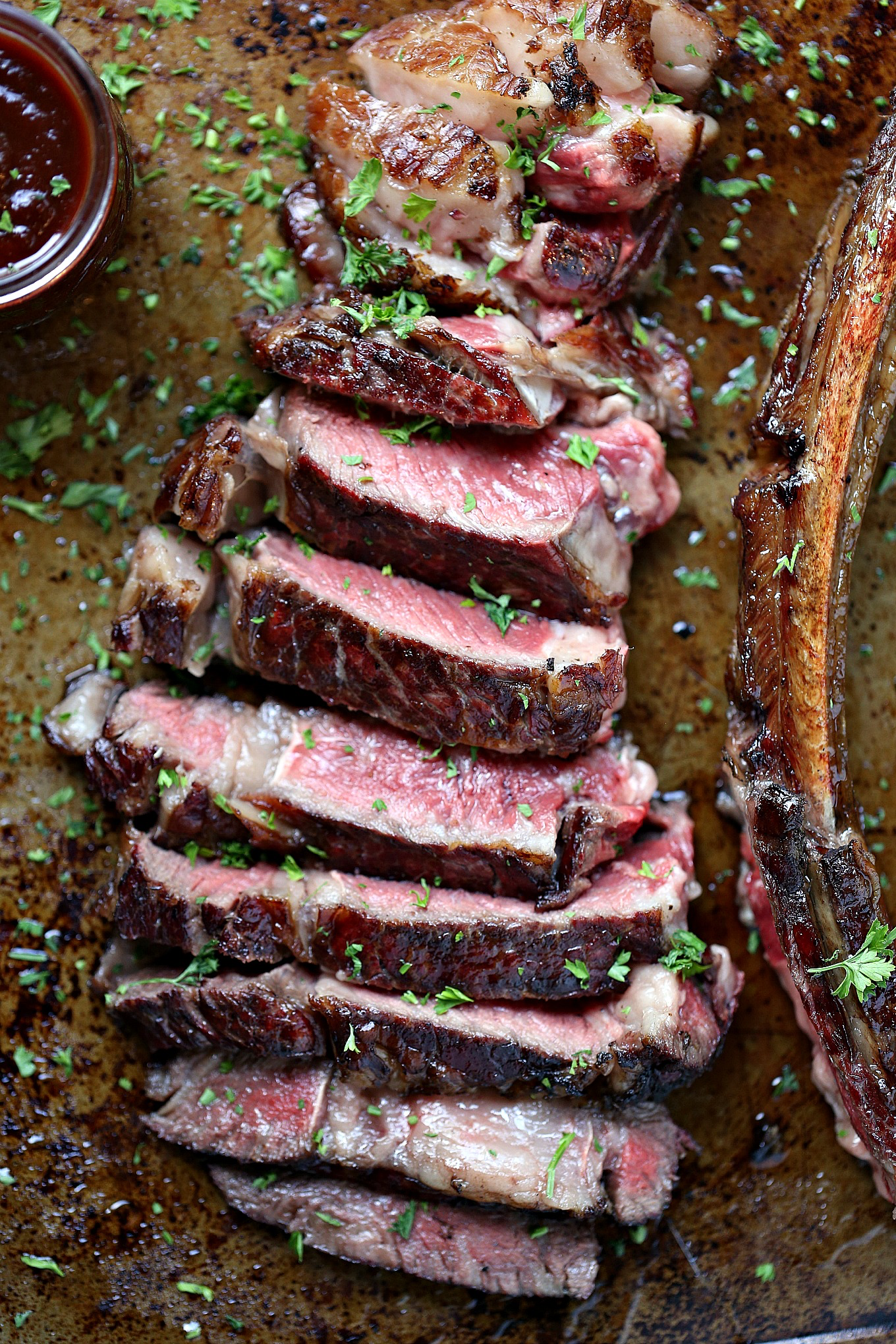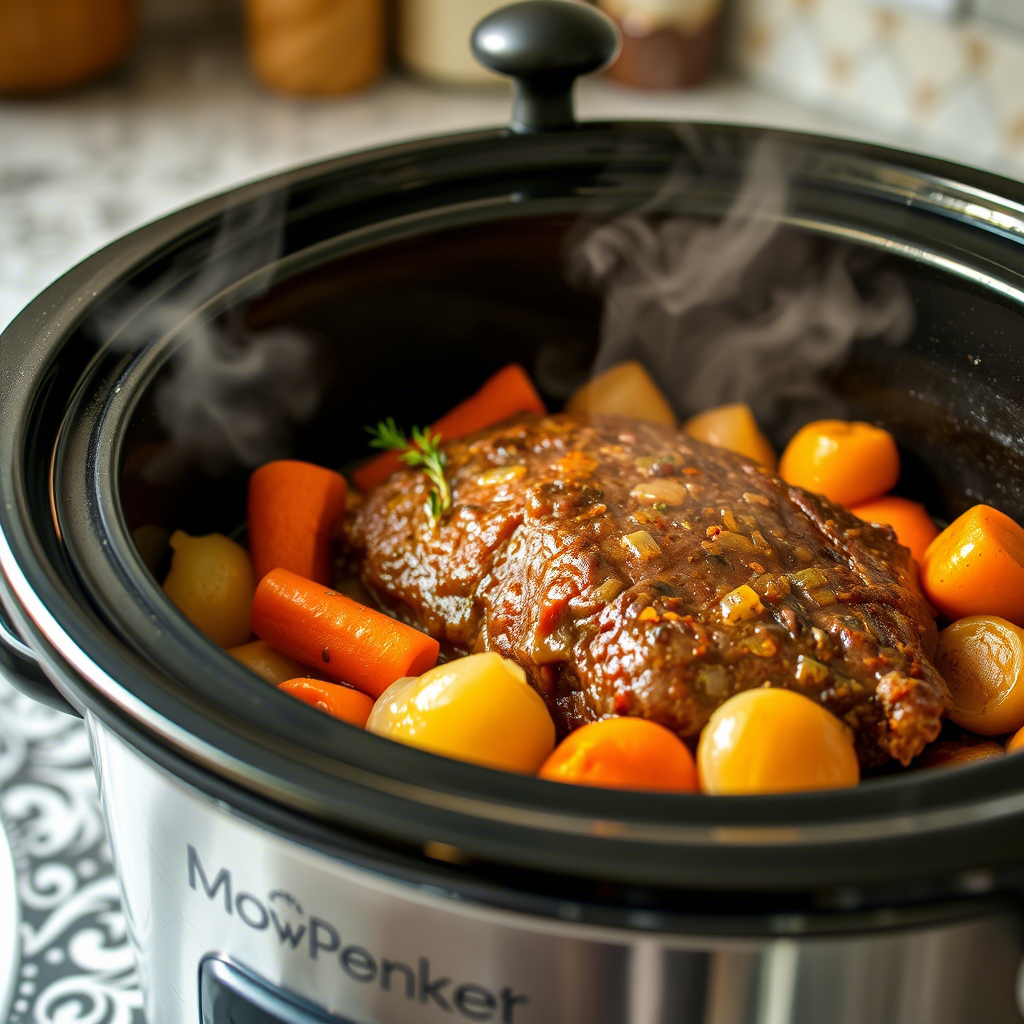Slow Cooker Mexican Chicken Recipe
Slow Cooker Mexican Chicken Recipe: Easy, Versatile, and Seriously Flavorful

Hi! I’m Chef Marcus. And if I had a dollar for every time someone asked me for a chicken recipe that didn’t turn out dry, bland, or suspiciously gray, I’d be writing this from a villa in Oaxaca. But I’m not. I’m here, and I’ve got something better for you: my go-to Slow Cooker Mexican Chicken. It’s bold, reliable, and about as low-maintenance as a dinner recipe gets.
You can throw it in the pot before work, come back to a house that smells like a taquería, and serve it over rice, in tacos, under eggs, or right out of the container on day three when you’re too tired to care. And it always hits. No searing, no stirring, no babysitting.
Let me walk you through how it works — and why it works so well.
- Understanding the Recipe
- Ingredients: What You’ll Need
- Equipment: What You Need (and What You Really Don’t)
- Temperature Settings: What’s Best?
- Cooking Time Breakdown
- Nutritional Info (Per Serving)
- Step-by-Step Recipe: How to Make Slow Cooker Mexican Chicken
- Variations: Spicy, Creamy, and Verde
- Ingredient Spotlight: Chipotles in Adobo — The Secret Weapon You Shouldn’t Skip
- Serving Suggestions and Pairings
- Storage and Reheating Tips
- What to Do with the Leftover Sauce
- Frequently Asked Questions
Understanding the Recipe
Here’s the thing about slow-cooked chicken: done right, it’s juicy, shreddable, and packed with flavor. Done wrong, it’s either waterlogged or dry enough to exfoliate your tongue. The trick is balance — and this recipe nails it because it’s built around three simple ideas:
First, you need bold but balanced spice. We’re not just tossing in heat for the sake of it. Cumin, smoked paprika, chipotle — they work together to add depth, not just burn.
Second, you’ve got to manage your moisture. That means just enough broth and tomatoes to create steam and sauce — not so much that the chicken’s swimming, but not so little that it dries out on top.
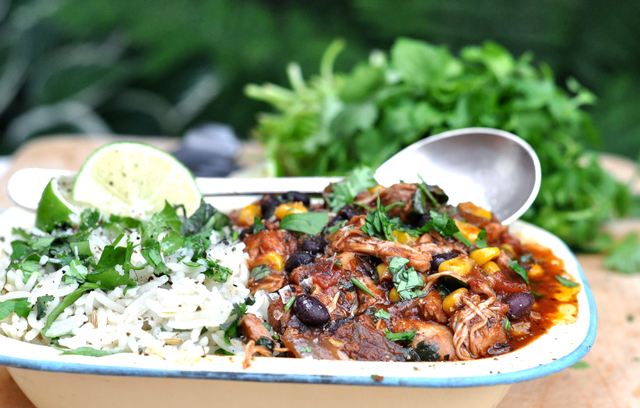
And third? Simplicity. You don’t need to sear anything. You don’t need to roast, caramelize, or flash-fry. You layer it all up, lock the lid, and walk away. The slow cooker handles the transformation while you go do literally anything else.
What you get is chicken that’s as versatile as it is flavorful. Tacos? Absolutely. Burrito bowls? For sure. Over a baked sweet potato with a dollop of crema and pickled onions? Now we’re talking. I’ve even put it in a quesadilla with scrambled eggs. Zero regrets.
Ingredients: What You’ll Need
Everything here is pantry-friendly. No hard-to-find imports. No weird powders that live in the back of the cabinet until 2027. And yes — I’ve noted the swaps you can make if you’re missing something or feeling adventurous.
- About two pounds of boneless, skinless chicken breasts (or thighs if you want it richer and more forgiving)
- One can of diced tomatoes (14.5 oz / 410g — fire-roasted if you’ve got it)
- Half a cup of chicken broth (low sodium is best, but I won’t police you)
- Two tablespoons of tomato paste (adds depth and thickness)
- One small yellow onion, finely chopped
- Three cloves of garlic, minced (or grated if you’re in a hurry)
- One tablespoon of olive oil (optional, but gives the sauce a little body)
- One and a half teaspoons ground cumin
- One teaspoon smoked paprika
- Half a teaspoon chipotle chili powder (or more, if you like to sweat a little)
- Half a teaspoon dried oregano
- Half a teaspoon kosher salt
- A quarter teaspoon ground black pepper
- Juice of one lime (squeeze this in after cooking — trust me)
Pro tip: If you want a creamy finish, stir in a spoonful of sour cream or cream cheese right after you shred the chicken. It’s not traditional — but it is delicious.
Equipment: What You Need (and What You Really Don’t)
Let’s not overcomplicate this. You don’t need a countertop full of gadgets to make good food.
- A slow cooker — 4 to 6 quarts is perfect. Manual, digital, hand-me-down from your aunt — doesn’t matter.
- A fork (or two) to shred the chicken when it’s done
- Maybe a ladle or slotted spoon if you’re serving it over rice or trying to keep the sauce in check
No need for a pressure cooker. No blender. No immersion wand thingy. Just a pot with a plug, and you’re good to go.
Temperature Settings: What’s Best?
The beauty of this dish is that it works on your schedule. Want to set it and forget it for the whole day? Low is your friend. Short on time and need dinner fast-ish? High will get you there — just pay a little more attention near the end.
| Setting | Time | What You Get |
| Low | 6–7 hours | Tender, juicy, shreds perfectly |
| High | 3–4 hours | Still great, but keep an eye on it |
Chef’s note: Using chicken thighs? Let them go a bit longer. They’re fattier and take more time, but the flavor payoff is real.
Cooking Time Breakdown
This is where it earns its keep. You do five minutes of actual work. The rest is just you living your life.
- Prep time: five to seven minutes, tops
- Cooking time on low: six to seven hours
- Cooking time on high: three to four hours
- Rest and shred: about ten minutes — just long enough to make a margarita
Nutritional Info (Per Serving)
Makes six servings. Calories are calculated without toppings — so feel free to interpret that number loosely once you’ve added rice, avocado, and a handful of cheese.
| Nutrient | Amount |
| Calories | 215 kcal |
| Protein | 30g |
| Carbohydrates | 7g |
| Sugars | 3g |
| Fat | 7g |
| Saturated Fat | 1.5g |
| Sodium | 420mg |
| Fiber | 2g |
If you use thighs, bump the fat and calories slightly. If you drown it in crema and stuff it into a cheesy quesadilla — well, no judgment here.
Step-by-Step Recipe: How to Make Slow Cooker Mexican Chicken
So now you’ve got your ingredients lined up, your slow cooker dusted off, and maybe a quiet sense of skepticism about how something this simple can taste that good. Fair enough. Let’s walk through it — step by step — and I’ll show you exactly how this comes together, from the first pour to that final, perfect squeeze of lime.
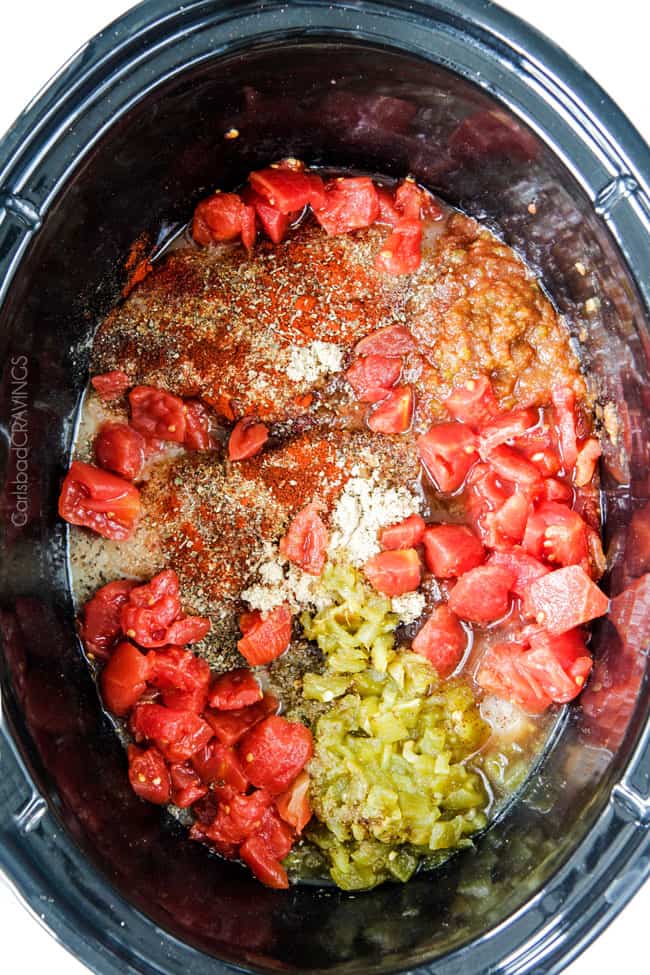
You’ll start by layering flavor from the bottom up. This is slow cooking, after all — there’s no browning or flambé here. Everything needs to be placed in a way that encourages the chicken to soak up seasoning, not steam in its own juices like a forgotten school lunch. First, grab your slow cooker. If it’s one of those old ceramic crocks, congratulations — it might actually do a better job than your neighbor’s $200 Bluetooth-connected monstrosity. Set it up on the counter and let’s begin.
Start with the base: pour in your chicken broth, the can of diced tomatoes (juice and all), and tomato paste. Stir that just enough to loosen the paste — you don’t want clumps, but you also don’t need to whisk like you’re prepping a soufflé. Once that’s looking reasonably smooth, toss in your chopped onion and garlic. At this point, it’ll smell a little like a marinara gone rogue — that’s exactly what you want.
Now for the spices. Add the cumin, paprika, chipotle powder, oregano, salt, and pepper directly into the liquid. Don’t bother premixing in a bowl — this isn’t pastry school. The slow cooker doesn’t care if the cumin goes in 30 seconds before the oregano. Just make sure it all ends up in the pot. If you’re using olive oil (which I do recommend for an extra hit of richness), drizzle it over the top now.
Time to add the chicken. Nestle your chicken breasts directly into the mixture. Don’t stack them like a game of Jenga — spread them out in a single layer if possible. They should be just barely submerged. Cover the cooker, lock in the lid, and walk away.
If you’re using the low setting — and you should if you have the time — come back in about six and a half hours. The chicken should be tender enough to shred with a fork, but still holding its shape. On high, check around the three-hour mark. The risk of overcooking is real, especially with lean breasts, and while a bit of extra cooking time won’t ruin it, too much will start to dry the edges.
Once it’s done, take off the lid and let the steam punch you in the face with cumin, garlic, and that smoky chipotle heat. Use two forks to shred the chicken directly in the pot. Don’t drain anything. That liquid is gold. Stir it all together until the shredded chicken soaks up every drop of flavor. Then — and only then — squeeze in the juice of a fresh lime. This isn’t optional. That last-minute acid lift is what separates “good” from “why don’t I make this every week?”
If you’re serving it right away, go ahead and plate it — tacos, rice bowls, salads, you name it. If you’re storing it, let it cool first, then portion it into containers with a bit of the cooking liquid to keep it juicy. Either way, give yourself a moment to taste it straight from the spoon. That’s the real test — and if you followed the steps, it should pass with flying colors.
Variations: Spicy, Creamy, and Verde
One of the best things about this recipe — besides the fact that it practically cooks itself — is how easy it is to adapt without breaking the structure. The base is solid. You’ve got a flavor-forward, slow-cooked protein with its own built-in sauce. That gives you room to pivot, depending on what you’re craving or what’s sitting in your pantry. Below are three tested, reliable variations I’ve returned to over the years — each with its own personality.
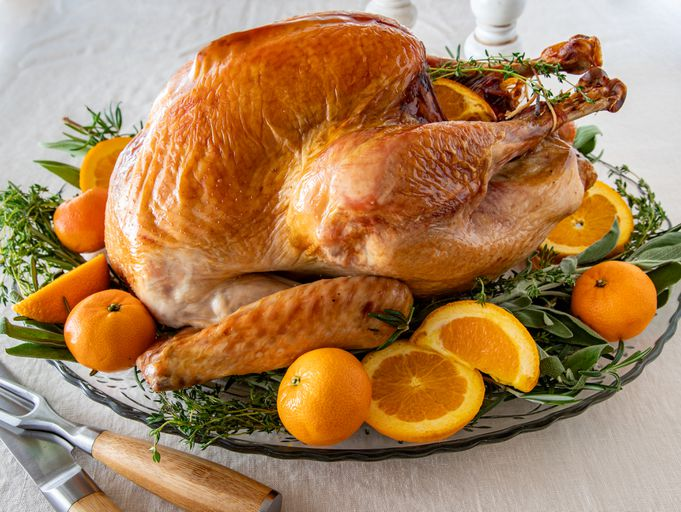
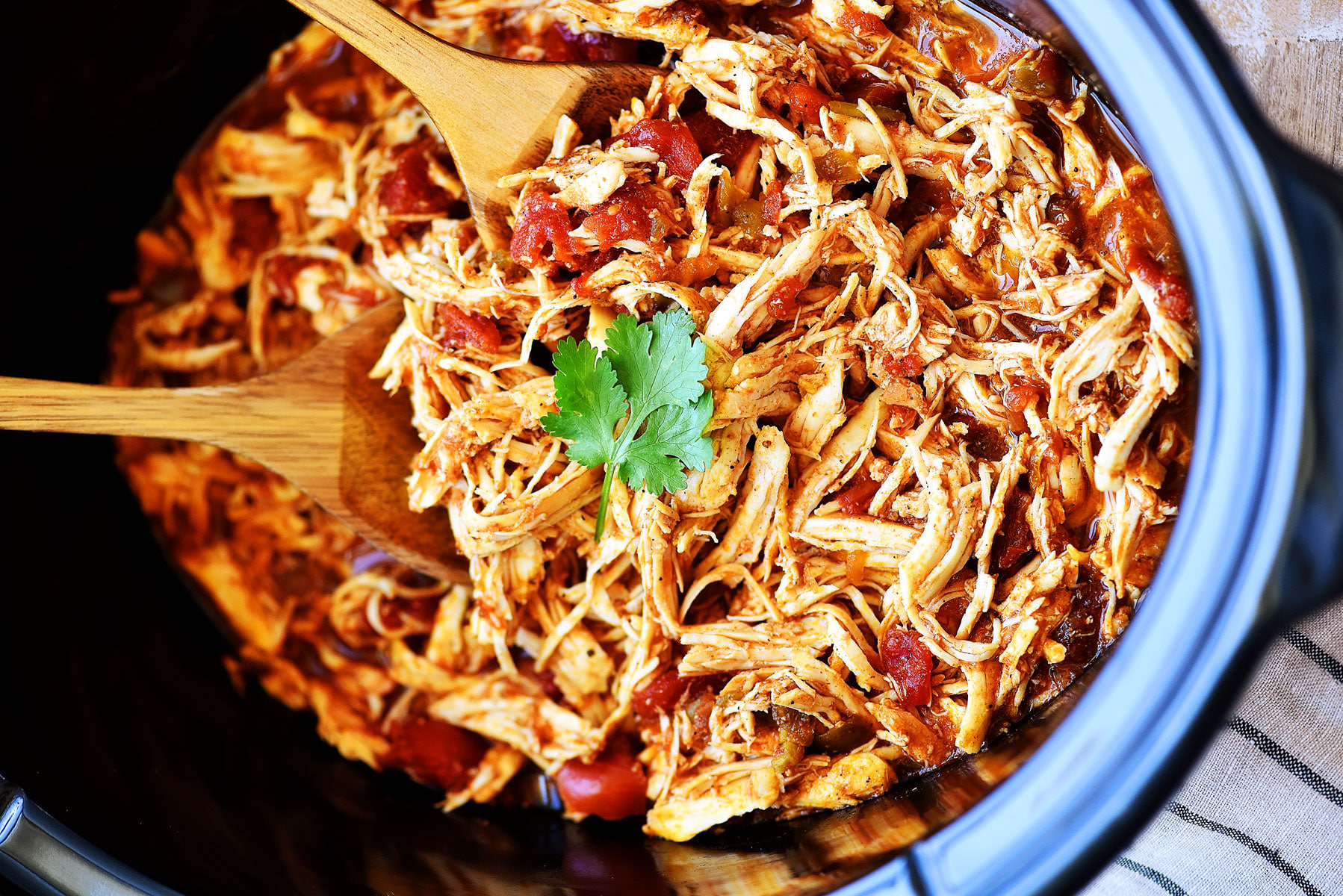
Let’s start with the spicy version, which isn’t just about throwing in more chili powder and hoping for the best. Heat without flavor is a waste of good sweat. So instead of blindly doubling the chipotle, I swap in one or two whole chipotles in adobo sauce. You’ll find them in small cans, usually near the beans or Mexican products. Pull out a pepper, mince it finely, and stir it into the base mixture along with a spoonful of the adobo sauce itself. The result isn’t just hotter — it’s smokier, deeper, and richer. It’ll still be family-friendly if you use just one pepper, but two will let you know it’s there. You can also add a pinch of cayenne if you want more fire and less smoke. But the key is this: don’t adjust the salt or acid to compensate. Let the heat do its job and finish it the same way — with lime — so it stays balanced.
Now, if you’re in the mood for something a little softer around the edges, go for the creamy version. Same base ingredients, same cooking time, but once the chicken is cooked and shredded, stir in a generous dollop of sour cream or cream cheese. I usually go with two to three tablespoons per pound of chicken. It melts right in and turns the sauce silky, almost velvety, with just enough tang to keep it from getting too heavy. You’ll lose a little of that concentrated broth intensity, but you’ll gain body — and that’s worth it if you’re planning to serve it over rice or stuff it into enchiladas. One note: if you’re adding cream, skip the lime juice. The acid plus dairy can curdle or separate, especially if you plan to reheat it. Instead, use a touch of hot sauce if you want to brighten the flavor at the end.
The verde version swaps out tomatoes for tomatillos, turning this into a green, slightly tart twist that’s perfect for summer tacos or pairing with sweet corn and avocado. To make it, replace the diced tomatoes and tomato paste with one 12–16 oz jar of salsa verde — preferably a thinner, tangier kind rather than a thick chunky one. That’s your acid and body. Keep the rest of the spices mostly the same, but consider replacing the paprika and chipotle with a small handful of chopped cilantro stems and a half teaspoon of ground coriander. The flavor shifts toward brightness and herbal depth instead of smokiness. Once it’s done cooking, toss in some fresh chopped cilantro and maybe a splash of extra salsa to loosen it up. You’ll end up with a zippy, citrusy version of the original that’s made for warm tortillas and a cold drink.
Each of these versions is more than just an adjustment — they’re full-on alternate takes. And they all work because the core structure holds. You’ve got slow-cooked, well-seasoned meat, enough moisture to build flavor, and an end-stage step to tie it all together. Once you’ve made the base once or twice, switching between them becomes second nature. You start reading the room, the season, or just your own tastebuds, and you pick the one that fits.
Ingredient Spotlight: Chipotles in Adobo — The Secret Weapon You Shouldn’t Skip
Let’s talk about chipotle powder’s older, stronger, cooler cousin: chipotles in adobo sauce. If you’ve only ever cooked with the dry version, you’re not getting the whole story — or the full flavor.
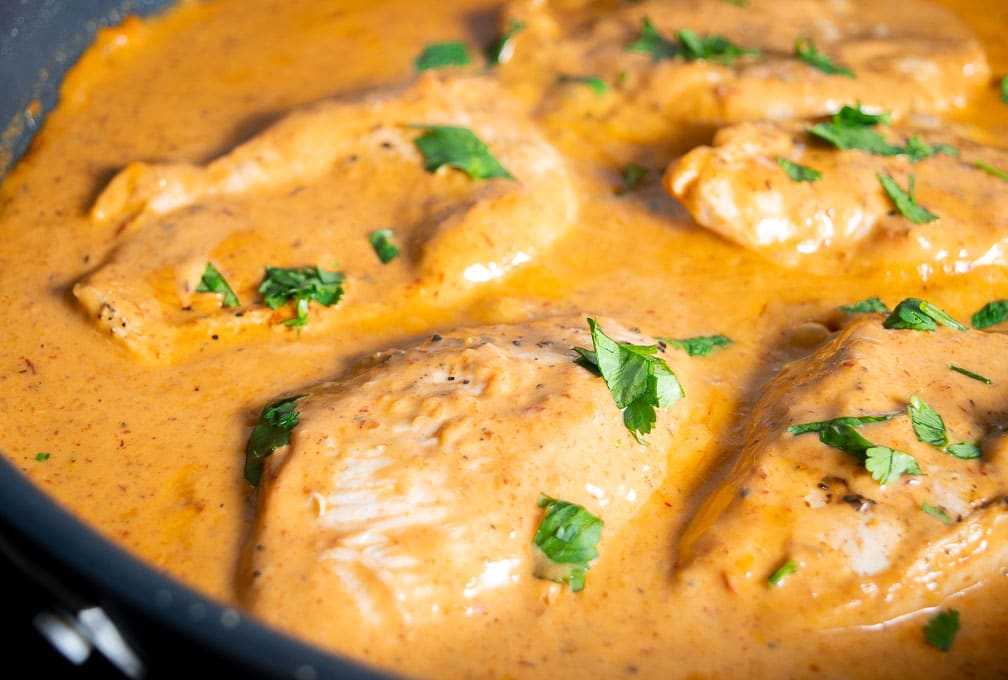
Chipotles in adobo are smoked, dried jalapeños rehydrated and packed in a thick, tangy, spiced tomato-vinegar sauce. That sauce alone has enough personality to season a pot of beans, and the peppers themselves? Deep, dark, and smoky with a creeping heat that builds slowly instead of slapping you in the face. It’s what gives that “can’t quite place it” depth to a lot of great Mexican and Tex-Mex dishes — and once you start using them, the dry stuff starts tasting… well, dry.
In this recipe, I call for chipotle powder for convenience and flexibility — and it works just fine. But if you’ve got the canned stuff, or are willing to pick some up, use one or two whole chipotle peppers, finely minced, plus a teaspoon or so of the adobo sauce they’re packed in. You’ll get a richer, rounder, more complex flavor — the kind that makes you wonder why dinner suddenly tastes like it’s been cooking for twice as long.
Can’t find them locally? Here are some decent substitutions:
- 1 ½ tbsp chipotle powder
- 2 tsp smoked paprika
- ¼ cup sriracha
Mix those together and you’re close enough for jazz. It’s not a perfect replica, but the combo of smoke, vinegar, and heat does a convincing impression.
Storage tip: Once you open a can, don’t toss what you don’t use. Transfer the rest to a small zip-top freezer bag or ice cube tray, freeze flat, and just break off a chunk when you need it next. It keeps for months and adds instant magic to soups, marinades, eggs, beans — anything that needs a punch of smoky umami.
Bottom line? If chipotle powder is a good shortcut, chipotles in adobo are the scenic route — and they’re worth the extra mile.
Serving Suggestions and Pairings
When I first started making this recipe, I used to default to the obvious — tortillas, maybe some cheese, call it dinner. But the more I cooked it, the more I realized just how many roles this chicken can play. It’s like that one band that somehow fits every playlist: tacos on Tuesday, rice bowls on Wednesday, nachos by the weekend. It adapts, and it never complains.
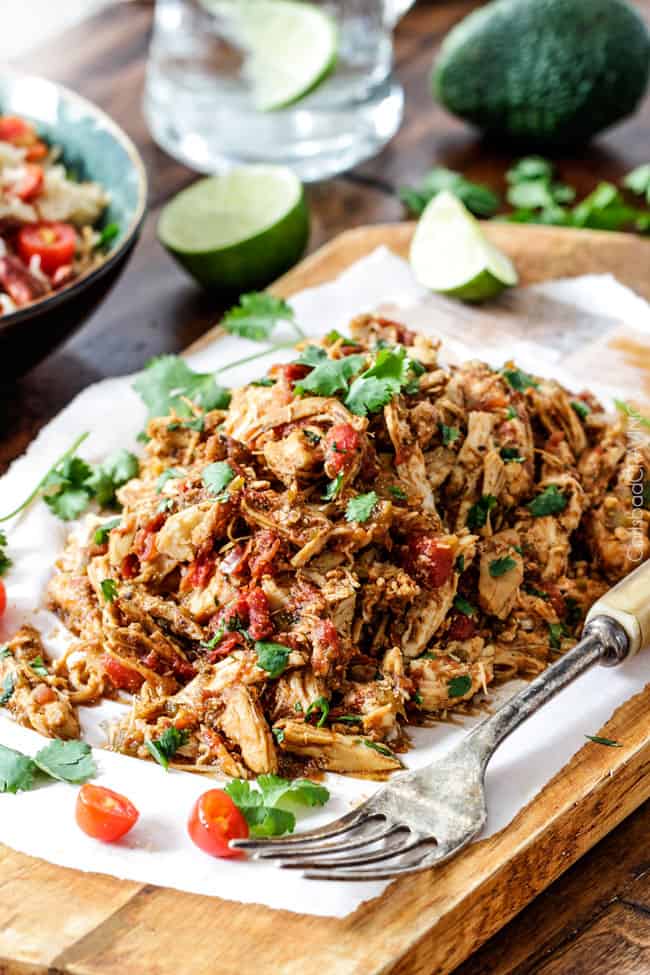
Let’s start with the basics. Tacos are the natural home for this chicken — soft corn tortillas, warmed briefly on a dry skillet until pliable and fragrant, then piled high with shredded meat, a spoonful of pico de gallo, maybe some avocado or crumbled cotija. I don’t recommend drowning it in cheese unless you’re going full Tex-Mex, in which case: melt it right into the meat, fold it inside a flour tortilla, and pan-sear it into a quesadilla. That’s a meal and a half.
Rice bowls are another no-fail option. Spoon the chicken over a base of steamed jasmine or long-grain rice (or brown rice if you’re feeling virtuous), then top it with black beans, diced red onion, jalapeños, and a drizzle of lime crema or chipotle mayo. You can prep everything ahead, portion it into containers, and call it lunch for the week — and you won’t be sad about it come Wednesday.
If you’re hosting — or just pretending to — try loading the chicken into lettuce cups with a crunchy slaw and lime wedges on the side. Or heap it onto nachos: spread out a single layer of tortilla chips (yes, a single layer, we’re not building a chip pyramid), scatter the chicken across them, then add beans, cheese, and bake it all until bubbly. Finish with sour cream, cilantro, and a squeeze of lime, and you’ve got the kind of snack that makes guests think you’ve got it all figured out.
Now, for the more creative angles. Tuck it into baked sweet potatoes, top with crema and cilantro. Fold it into scrambled eggs with pepper jack cheese and stuff it into breakfast burritos. Or, if you’re into hearty soups, add it to a pot of black bean soup or corn chowder — it’ll absorb flavor and bulk up the texture without stealing the spotlight.
As for sides, I’m partial to anything that adds contrast. A tangy cabbage slaw. Quick-pickled onions. Roasted corn with cotija and chili powder. Even just a big pile of lime-dressed arugula on the plate can wake up the richness. And don’t underestimate the power of a warm tortilla — homemade if you’re ambitious, store-bought and toasted if not.
For drinks, keep it clean and refreshing. A crisp Mexican lager like Pacifico or Modelo will do you right. Or a paloma — tequila, grapefruit soda, and lime — if you’re feeling celebratory. Just keep the reds and heavy beers away. This dish is bold but balanced, and it doesn’t need to compete with whatever’s in your glass.
Bottom line: serve it how you want, but give it a worthy home. This isn’t an afterthought recipe. It’s the kind of thing that deserves to be plated with intention, whether that’s on a plastic tray during lunch break or under candlelight on a Tuesday.
Storage and Reheating Tips
Alright — you’ve cooked it, shredded it, maybe even served it up a few different ways. But what about the rest? This chicken’s too good to waste and too versatile to let sit forgotten in the back of the fridge. Here’s how to store it properly, reheat it right, and keep the flavor working long after the slow cooker’s been unplugged.
Let’s start with the immediate aftermath — the moment after you’ve shredded the chicken and stirred it through that rich, spiced broth. First rule: don’t rush it into the fridge. Give it ten, fifteen minutes to cool slightly. Not to room temperature — we’re not tempting fate here — but enough that it doesn’t steam up your containers like a sauna. Moisture is the enemy of texture, and we want to lock in flavor, not condensation.
Once cooled, portion it into airtight containers. And I do mean portion. Don’t just dump everything into one Tupperware behemoth unless you plan to reheat the whole batch at once. I prefer two- or three-serving containers — enough for lunch and a dinner backup. Spoon in a little extra liquid from the slow cooker into each one. That broth isn’t waste — it’s flavor insurance. It keeps the chicken moist, and it reheats better when it’s got something to simmer in.
Stored this way, it’ll last four to five days in the fridge without losing its edge. The flavor actually gets better on day two as everything settles and melds — like chili or stew. The chipotle warms up a bit, the lime tucks itself deeper into the sauce, and the whole thing becomes more cohesive. It’s like a band tightening up on the second night of a tour.
For longer storage, this chicken freezes beautifully. Just make sure it’s completely cool before freezing, and always include that extra liquid in the container or freezer bag. I flatten bags out when I can — they freeze faster and stack like books in the freezer. Label them clearly. Trust me, frozen tomato-based sauces all start to look alike after a month. Mark the date, too — you’ll get about two to three months of good quality in the freezer before the flavor starts to dull. It won’t spoil, but it’ll lose that spark.
Reheating is simple, but you’ve got options. For individual portions, the microwave works fine — just cover it with a loose lid or damp paper towel to trap steam and reheat gently. Go for 60–90 seconds at a time, stirring halfway through. If it’s thickened up in the fridge, add a splash of water or broth to loosen it. You’re not reviving it — you’re waking it up.
For multiple servings, I prefer the stovetop. Use a skillet or saucepan over medium heat, add the chicken with its juices, and let it warm slowly. Stir occasionally. Don’t crank the heat — this isn’t a sear. You’re coaxing the flavor back to life, not beating it with a torch.
One last note: if you added dairy to make the creamy version, reheat extra gently. Sour cream and cream cheese have a tendency to split if overheated. Keep the heat low, stir frequently, and if it starts to look a little grainy, whisk in a spoonful of milk or cream to smooth it out. Works every time.
Done right, this recipe is the kind of thing that tastes fresh even after a couple days in the fridge or a month in the freezer. It’s not just meal prep — it’s flavor on demand. And once you’ve got a few portions tucked away, your future self is going to owe you one.
What to Do with the Leftover Sauce
After you’ve shredded the chicken, you’ll usually find yourself staring down a pool of deep red sauce at the bottom of the slow cooker. It’s smoky, spiced, slightly tangy — and far too good to waste. So don’t.
That liquid is gold. It’s not just runoff — it’s concentrated flavor from hours of slow cooking. You’ve got tomatoes, broth, lime, spices, and rendered juices from the chicken all swirling together in one rich, velvety sauce. And it’s incredibly useful.
Here’s what I do with it:
1. Cook rice in it.
Substitute the sauce for part (or all) of the water when making white rice, brown rice, or even quinoa. It adds depth, color, and a whisper of heat. A half cup of sauce to one cup of water is a good place to start.
2. Use it as soup starter.
Add a few cups of chicken broth, a can of black beans, corn, and some chopped peppers — boom, tortilla soup. Toss in a handful of rice or tortilla strips if you want it heartier.
3. Make fast enchilada sauce.
Puree the leftover sauce if it’s chunky, simmer it with a spoonful of tomato paste and a splash of vinegar, and use it to coat tortillas or pour over enchiladas. It’s not traditional — but it is fast and flavorful.
4. Drizzle it over roasted veggies.
Think cauliflower, sweet potatoes, or charred corn. It adds an umami layer that elevates even the simplest sides.
5. Freeze it.
Pour the sauce into a mason jar (leave room for expansion) or a zip-top freezer bag, label it, and freeze it flat. It keeps beautifully for up to 3 months. Thaw and use as a marinade, soup base, or simmer sauce for another protein down the line.
So the next time you’re tempted to dump that extra sauce — don’t. Bottle it, reuse it, and let it do a second tour of duty in another dish. Your future self (and your grocery bill) will thank you.
Frequently Asked Questions
Now, before we wrap things up, let’s cover a few questions I’ve heard more times than I can count. Whether it’s from first-timers who just unpacked their slow cooker or seasoned home cooks trying to troubleshoot texture or spice levels, these are the things people really want to know — and the answers that’ll keep your chicken juicy, your flavors balanced, and your cooking game strong.
Can I use frozen chicken in the slow cooker?
This one comes up a lot — usually right after someone realizes they forgot to thaw dinner. The short answer is: technically yes, but I don’t recommend it. The longer answer is about food safety. Frozen chicken takes longer to come up to a safe temperature, and in a slow cooker — where heat rises gradually — you risk keeping the meat in that danger zone (between 40°F and 140°F) too long. Bacteria love that window. So while the USDA might not show up at your door, I will — and I’ll tell you to thaw your chicken in the fridge overnight like a responsible adult. It’s safer, it cooks more evenly, and it absorbs seasoning better.
Can I use chicken thighs instead of breasts?
Absolutely — and honestly, I do it often. Thighs are more forgiving. They have more fat, which means more flavor and a richer texture, especially after hours in the slow cooker. They’re also harder to overcook. Just know that the finished dish will have a slightly different mouthfeel — looser, more succulent. Some folks find it too oily; I find it luxurious. Trim the excess skin and fat first, and everything else stays the same. Cooking time, seasoning, method — all identical.
What can I use instead of chipotle powder?
If you’re out of chipotle powder, you’ve got a few solid options. Smoked paprika plus a pinch of cayenne will get you close — smoky heat with a bit of kick. Ancho chili powder works too, though it’s milder and fruitier. In a pinch, even regular chili powder will hold the line, but you’ll lose that distinct smoky depth. If you really want to do it right and you’ve got time, toss in a minced chipotle pepper from a can of chipotles in adobo. That stuff brings flavor that powder just can’t match.
Can I double the recipe?
Yes — if your slow cooker can handle it. Most standard 6-quart models can hold about four pounds of chicken comfortably. Any more than that and you’ll be crowding the pot, which means uneven cooking and sad, steamed meat. If you’re doubling, make sure everything is still in a single layer, or close to it. And don’t just blindly double the liquid — you want enough moisture to create steam and sauce, but not so much that the chicken ends up boiling. Use about 1.5 times the broth and tomatoes for a double batch. It’s more art than math, but it works.
Why is my chicken dry even after slow cooking?
Ah, the eternal mystery — and one of the biggest reasons people give up on slow cookers. If your chicken is dry, there are a few usual suspects. First, you probably cooked it too long. Yes, even on low. Chicken breast is lean and doesn’t need to fall apart like a brisket. Six to seven hours is the sweet spot — anything beyond that, and it starts to dry out. Second, check your layering. If the chicken is sitting entirely above the liquid and the cooker runs hot, the top may dry out while the bottom stews. Lastly, don’t skip the resting time after cooking. Letting the meat sit in the juices for 10–15 minutes before serving helps reabsorb moisture and evens out the temperature.
Can I leave the chicken whole instead of shredding it?
You can — but just know it changes the dish. If you want to serve the chicken as whole breasts rather than shredded, cut the cook time back to avoid overcooking. Try 3–4 hours on low, or 2–3 on high. Use a meat thermometer and pull them once they hit 165°F (74°C) internally.
The main trade-off? You’ll miss out on that beautiful sauce absorption. Shredding the chicken lets all those juices and spices seep into every bite. Whole breasts will taste fine, but they’ll sit on the sauce rather than fully integrating with it. It’s a good option if you’re going for a plated presentation, but if flavor saturation is your goal — shredding wins.
How do I make it less spicy for kids (or spice-averse adults)?
Dial it back at the source. Skip the chipotle entirely and swap smoked paprika for sweet paprika. You’ll keep the depth without the heat. For extra safety, halve the cumin and garlic if you’re dealing with truly sensitive tastebuds — but don’t remove them completely. You want the dish to taste like something, not hospital food. Once cooked, serve it with sour cream, shredded cheese, or avocado — those cooling fats help balance any residual heat and give little mouths something they’ll actually enjoy.
Can I make it in advance for a party?
Absolutely. In fact, I recommend it. The flavors get even better after a night in the fridge. You can make the chicken a day or two ahead, store it with all its liquid, and reheat it just before serving — either on the stovetop or back in the slow cooker on warm. If you’re going buffet-style, keep it in the slow cooker with the lid off and a spoon nearby. People will help themselves, the aroma will draw them in, and you’ll look like a genius who cooked all day — even though you didn’t.
Is there a vegetarian version of this recipe?
Not directly — you can’t just remove the chicken and hope for the best. But if you’re looking for something in the same flavor family, try slow-cooking canned black beans with the same spice mix, a splash of broth, and some diced bell peppers and onions. Toss in a bit of quinoa near the end, or add roasted sweet potatoes for heft. It’s not “Mexican chicken,” but it is delicious, and it holds up to tortillas, bowls, or salads just the same.

